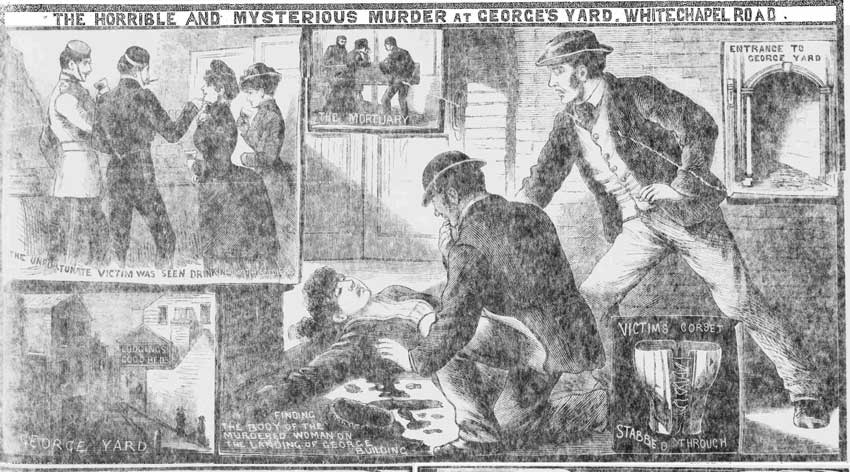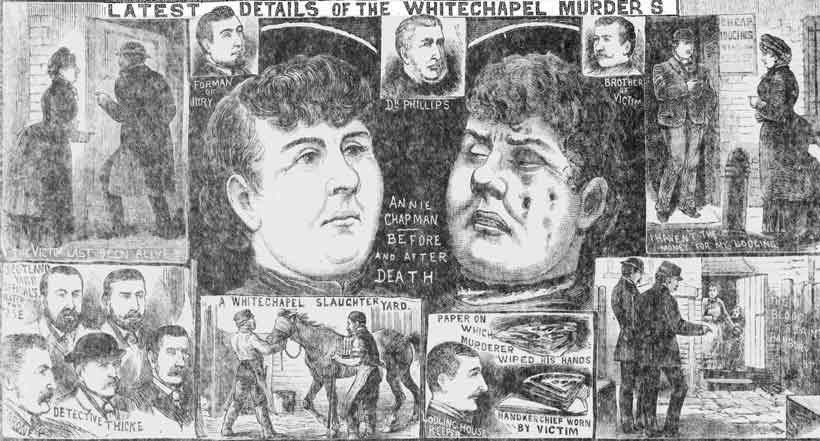By the 25th September, 1888, the mood in Whitechapel and Spitalfields has begun to relax somewhat, with regards the series of murders that had taken place in the district over the previous few months.
Today, we are familiar with the concept of the so-called “canonical five” victims as Jack the Ripper, which holds that the first actual victim was Mary Nichols, whose body was found in Buck’s Row, Whitechapel, on the 31st of August, 1888.
This concept dismisses the two earlier Whitechapel Murders victims – Emma Smith and Martha Tabram – as being victims of the killer who, as the end of September, 1888, was approaching was about to be given the name “Jack the Ripper.”
FOUR VICTIMS BY THIS TIME
But, at the time, the press, and, it would seem, the police, had no such certainty, and newspaper reports throughout September, 1888, were setting the number of victims, to that point, at four.
Whereas Emma Smith, murdered in early April, 1888, almost certainly was not a victim of the killer who would become known as “Jack the Ripper”, there can, in all honesty, be no such certainty about Martha Tabram.”
Indeed, many of the detectives who worked on the case would later look back and confess that, whereas they were not 100% certain that Emma Smith was a victim of the murderer, who one officer dubbed “the dread ripper”, there was no such uncertainty about the Martha Tabram’s having been one of his victim.
MARTHA TABRAM A VICTIM?
It is worth mentioning that the reason Martha is often dismissed as a ripper victim is that her injuries were not consistent with the mutilations inflicted on the bodies of the “canonical five.”
Yet, it is also worth pointing out that there, when it comes to the sequence of crimes now known as the Jack the Ripper murders, the only certainty is that nothing is certain!
Although it is true that Martha’s injuries were not consistent with those suffered by the the later victims, it is also true to say that a serial killer doesn’t just come onto the scene with a modus operandi perfectly formed.

SHE MAY HAVE BEEN A VICTIM
In fact, the modus opernadi often evolves over a period of time.
It is significant that, whoever it was that carried out the brutal murder of Martha Tabram targeted her throat and lower abdomen, just as the ripper would do with his later victims, so it is possible that this was a learning curve from which he went on to develop his later method of asphyxiating his victims before carrying out the mutilations, and thus reducing the chances of his being covered in blood after each of his crimes.
THE NEXT TWO MURDERS
The first definite victim of Jack the Ripper was Mary Nichols, murdered on the 31st August, 1888.
A week later, the killer struck again, and murdered Annie Chapman on the 8th September, 1888.
In the wake of both these crimes, there was a feeling of trepidation, not to say outright panic, in the streets of Whitechapel and Spitalfields where the crimes had occurred.

A CARNIVAL-LIKE ATMOSPHERE
But, after a few days, this gave way to morbid curiosity, and one can detect an almost carnival like atmosphere breaking out in the area as large numbers of people flocked to the murder sites to discuss the crimes and proffer suggestions as to the likely motivation of the perpetrator- or perpetrators.
INCREASED POLICE ACTIVITY
However, in the wake of Annie Chapman’s murder, there was also an increase of police activity in the streets by night, and this appears to have the effect of deterring the murderer, with the result that, after the 8th of September, 1888, there were no further murders until the end of the month.
A SIMILAR MURDER UP NORTH
As a result, the atmosphere in the area began to relax; and when, towards the end of September, news broke of a similar type of murder having occurred in the north of England, people came to believe that the Whitechapel murderer had left the district and headed to the north of the country.
With hindsight, they could not have been more wrong.
For, it appears that Jack the Ripper was simply biding his time; and, on the 30th September, 1888, he would return to the streets of the East End of London where he would carry out two further murders in less than an hour.
